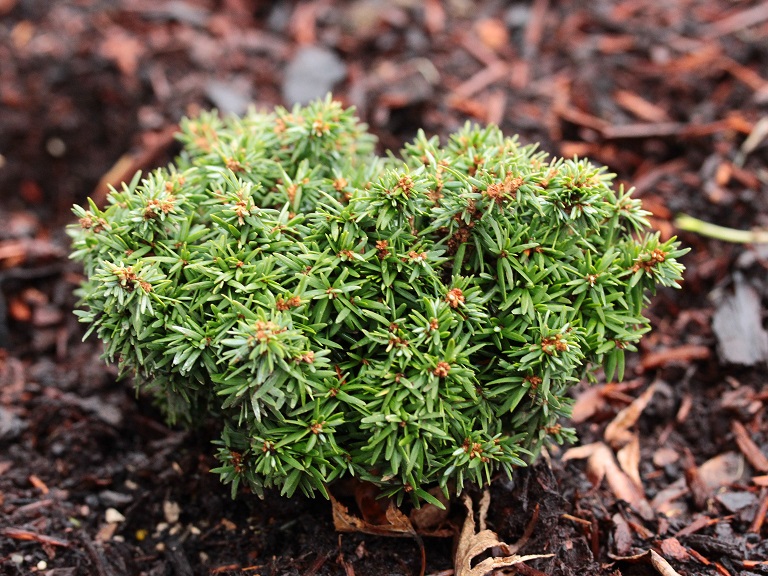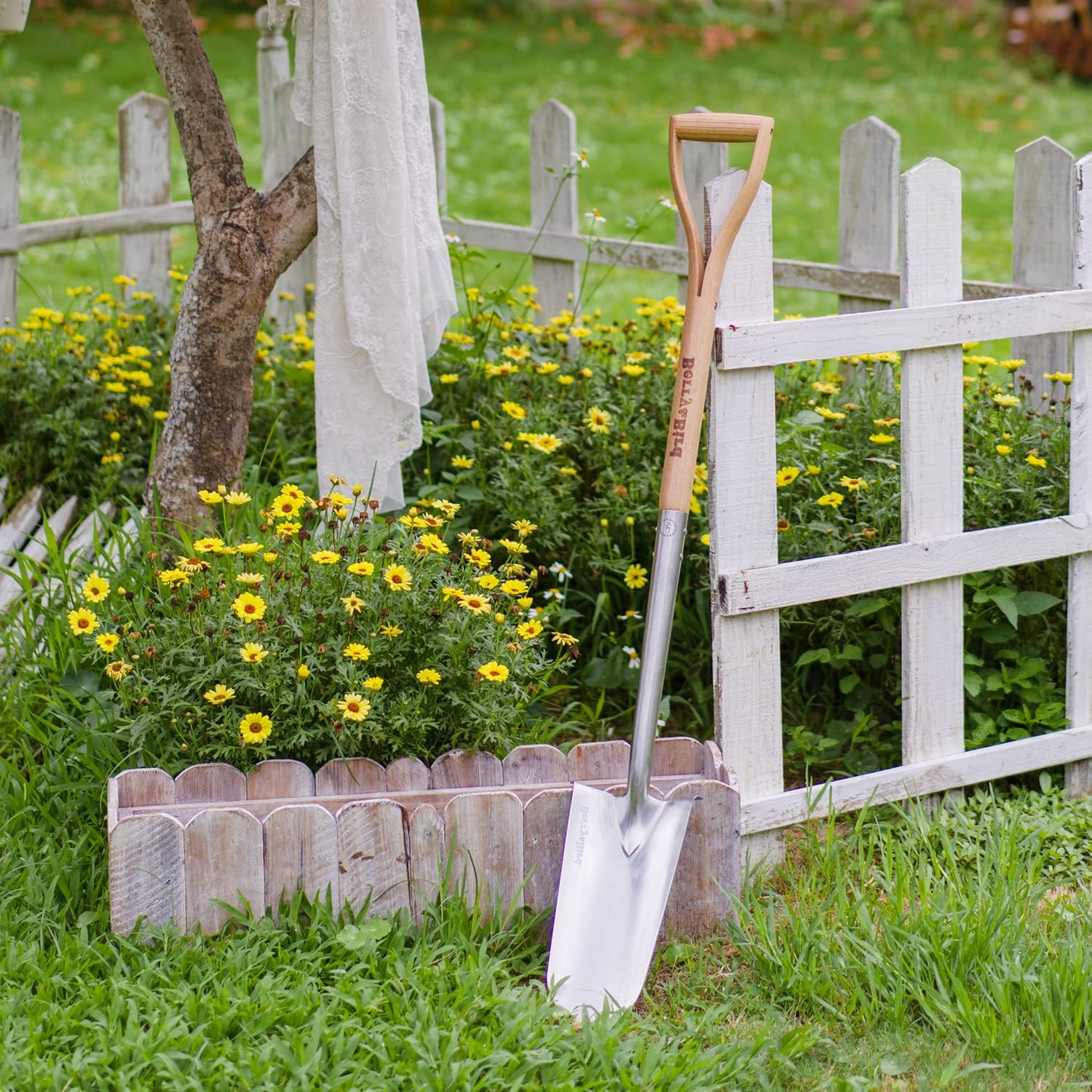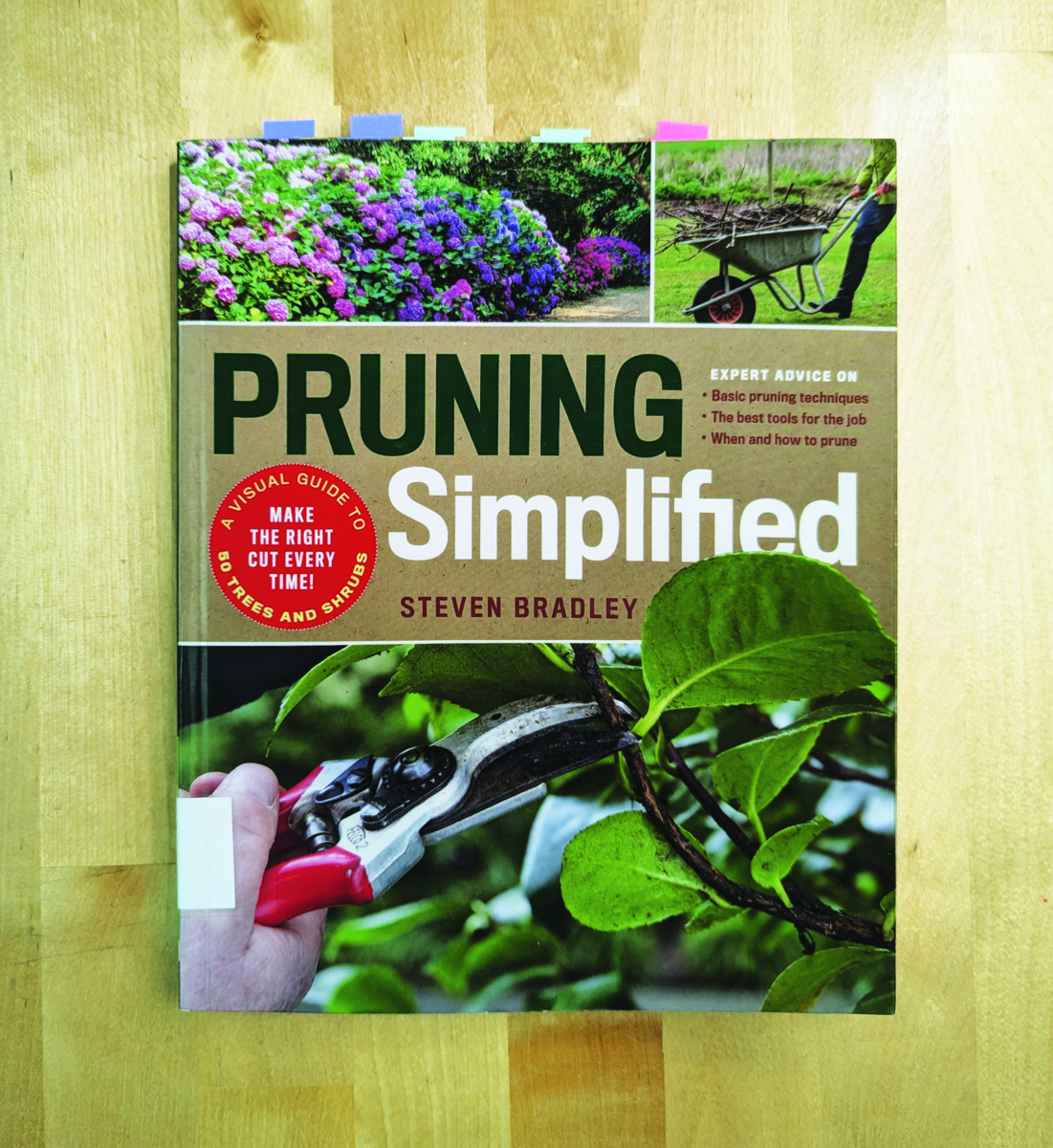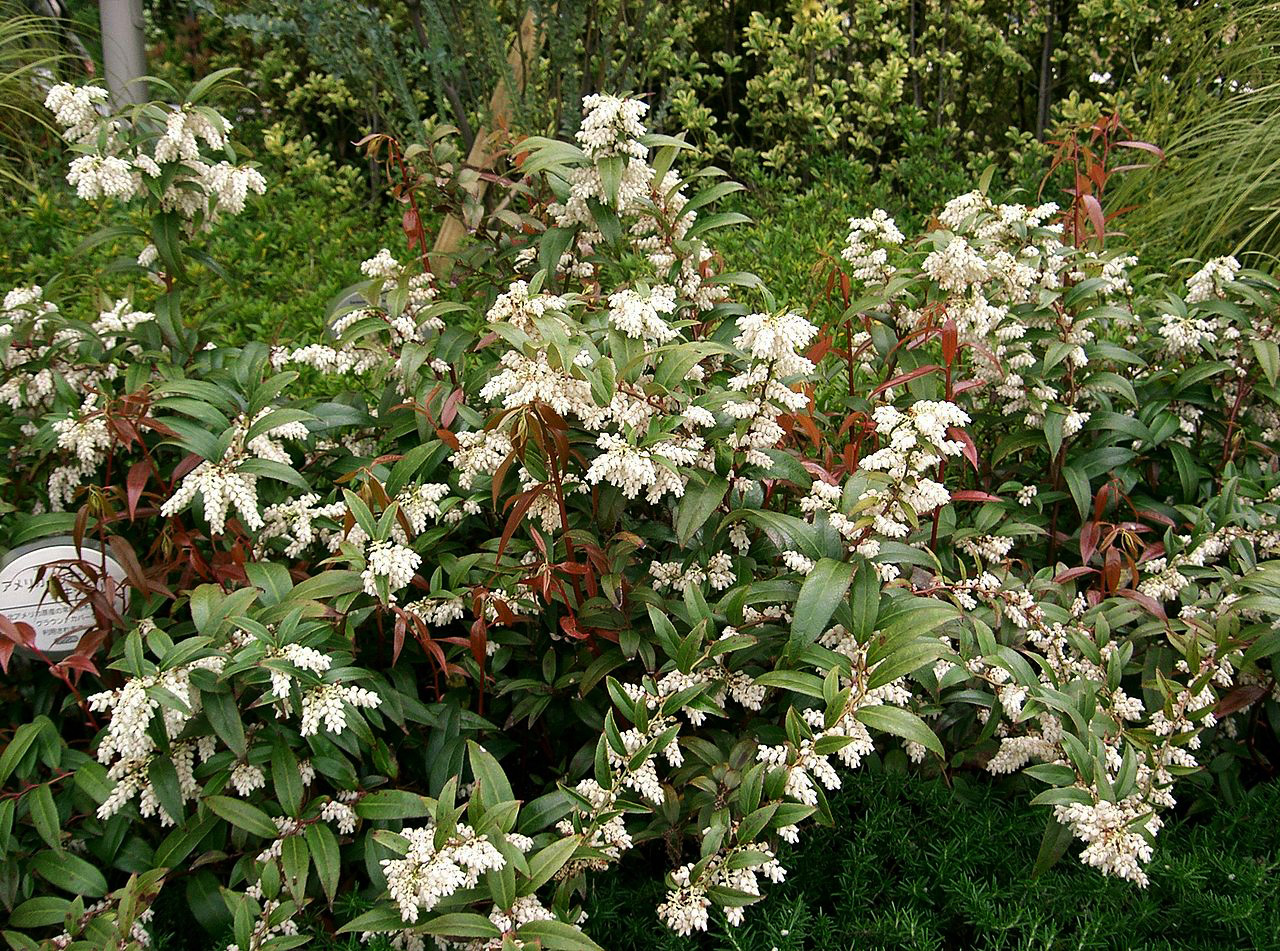Throw a stone in any neighborhood, and more likely than not, you’ll hit a boxwood tree. Boxwood (Buxus spp. and cvs., Zones 4–9) is the most popular evergreen shrub sold in the United States and much of the gardening northern hemisphere. In 2019, an estimated 11 million boxwood trees were purchased, accounting for $126 million of nursery sales. This equates to a ton of plant material going out into our neighborhoods and cities, but are boxwood trees really the best plant to be distributed so widely? As we learn more about the importance of adding native plants back into our developed landscapes, perhaps we can begin to utilize more native evergreen woodies as replacements to the boxwood. Despite its popularity, boxwood offers little value to wildlife and ecosystems and is far from a perfect fit for all gardens.
There are a number of reasons why boxwood is so popular, but its many forms, evergreen foliage, and ability to withstand heavy pruning are some of the major reasons for its wide use as a landscape plant, both in foundation plantings and hedges. However, boxwoods are not invincible. Their major foe is boxwood blight, caused by a bacteria known as Calonectria pseudonaviculata or CPS, which can be found in most corners of the world where boxwood is grown. In the USA alone, this disease has spread to over 30 states, putting at risk more than 90% of the nation’s boxwood production.
Aside from the risk of blight, boxwoods are susceptible to a host of issues including powdery mildew, root dieback, and leaf spot. They can suffer winter burn as well, which is a problem for gardeners in climates where the cold season can run on the harsh side and where evergreen foliage is so important for off-season interest.
Below you’ll find a variety of native shrubs to plant instead of boxwood, broken up by size. Those under 3 feet can be utilized for short hedges, foundation plantings, and stand-alone specimens. Plants that grow to over 3 feet work well for taller hedges, screening, and planting along property lines. Whatever your need, you’re sure to find a plant that will work for your region here, and one which will benefit pollinators and other wildlife to boot.
Small Specimens: 3 Feet and Under
Kalm’s St. John’s Wort
Hypericum kalmianum
Zones: 4–8
Size: 2 to 3 feet tall and wide
Conditions: Full sun; moist to dry, well-drained soil
Native range: Northeastern United States and southeastern Canada
Cheerful yellow blossoms with pom-pom-like stamens burst forth from Kalm’s St. John’s wort in summer, delighting bees and butterflies. Its neat, mounded habit, small size, and linear blue-green leaves make it an attractive addition to gardens of any size. Native to dunes and rocky lakeshores, it tolerates poor, dry soil as well as occasional flooding. Deer tend to avoid it, and it requires only light pruning to remove old seed capsules. This versatile plant works well in perennial borders, foundation plantings, and in native landscapes. Cultivars are available with more compact sizes and floriferous blooms.

‘Abbott’s Pygmy’ Dwarf Canadian Hemlock
Tsuga canadensis ‘Abbott’s Pygmy’
Zones: 4 to 8
Size: 12 to 18 inches tall and wide
Conditions: Part to full shade; average moist, well-drained soil
Native range: Northeastern United States and southeastern Canada
A miniature form of Canadian hemlock grows into a dense, ‘Abbott’s Pygmy’ is a globe-shaped shrub with tiny pointed green needles that is an ideal replacement for dwarf boxwoods. It can be used in shaded foundation plantings, in rock gardens, or even in containers. It prefers part shade in sheltered locations to avoid drying winds and afternoon sun. In northern climates, it can tolerate full sun but requires consistent moisture, especially during dry spells. Its slow growth and compact habit make it perfect for small spaces or as a subtle evergreen accent.
 |
 |
Creeping Oregon Grape
Mahonia repens
Zones: 5–8
Size: 1 to 2 feet tall, spreads up to 3 feet wide
Conditions: Partial shade to full sun; dry to medium, well-drained soil
Native range: Western United States and Canada
Creeping Oregon grape is a low-growing, evergreen shrub that offers year-round interest. Its holly-like, glossy green leaves turn reddish-purple in winter, providing seasonal color. In spring, clusters of bright yellow flowers bloom, followed by blue-black berries that attract birds and other wildlife. This tough, drought-tolerant plant thrives in poor soils and is excellent for erosion control, ground cover, or as a low-maintenance border. It’s also deer-resistant, making it a resilient addition to native landscapes.
‘Don’s Dwarf’ Wax Myrtle

Morella cerifera ‘Don’s Dwarf’
Zones: 7–10
Size: 3 to 4 feet tall and 4 to 5 feet wide
Conditions: Full sun to partial shade; average to moist soil
Native range: Southeastern United States
This compact version of wax myrtle offers dense, finely textured evergreen foliage with a delightful spicy fragrance. Unlike the larger species, ‘Don’s Dwarf’ is perfectly suited for foundation plantings and small garden spaces. It’s highly adaptable, tolerating heat, pruning, and varying soil conditions. Birds are attracted to its berries, adding ecological value to this low-maintenance shrub.
Larger Specimens: Over 3 Feet
 |
 |
Curl-Leaf Mountain Mahogany
Cercocarpus ledifolius
Zones: 4 to 10
Size: Up to 15 feet tall and 8 feet wide
Conditions: Full sun; well-drained soil
Native range: Western United States and Baja California
This rugged evergreen shrub thrives in dry, rocky conditions and can be shaped into a formal hedge or left to grow naturally as a small tree. Curl-leaf mountain mahogany features intricate branching, small evergreen leaves with curled edges, and feathery seed plumes that add ornamental interest. Once established, it requires little to no irrigation and is perfect for creating privacy screens or windbreaks in arid regions.
 |
 |
Evergreen Huckleberry
Vaccinium ovatum
Zones: 6 to 9
Size: 6 to 8 feet tall and wide
Conditions: Partial shade to full sun; moist, acidic, well-drained soil
Native range: Pacific coastal regions from California to British Columbia
A unique looking shrub, evergreen huckleberry offers glossy evergreen foliage and bronze-red new growth in spring. It produces pinkish flowers around the same time followed by edible black berries that are popular for making jams and jellies. Evergreen huckleberry tolerates a wide range of light conditions and attracts birds and mammals with its fruit. Its compact size in sunny conditions or larger growth in shade makes it versatile for borders, hedges, or wildlife gardens.
Coastal Leucothoe
Leucothoe axillaris
Zones: 5 to 9
Size: 3 to 6 feet tall and wide
Conditions: Partial to full shade; average soil
Native range: Eastern United States
While a weeping shrub might be considered a somewhat unusual suggestion as a replacement for boxwood, coastal leucothoe’s natural arching form makes it a beautiful choice for woodland gardens or shaded slopes. It features leathery, dark green leaves and clusters of urn-shaped white flowers that bloom from spring to early summer. The flowers also offer up a sweet scent reminiscent of honey that is attractive to humans and pollinators-alike. Coastal leucothoe is also adaptable to varying soil types and thrives near moisture, making it a great option for erosion control near water sources, as well as use as a specimen plant or hedging.

‘Shamrock’ Inkberry
Name: Ilex glabra ‘Shamrock’
Zones: 4 to 9
Size: 3 to 5 feet tall and wide
Conditions: Full sun to partial shade; average to wet, acidic soil
Native range: Eastern and south-central United States
This compact, rounded shrub features dense evergreen foliage that is ideal for foundation plantings or low hedges. ‘Shamrock’ inkberry is tolerant of wet soils and produces small white flowers in late spring that attract pollinators. Its black fruits, while not showy, provide food for wildlife. As one of the hardiest broadleaf evergreens, it’s a versatile and reliable choice for many gardens, although take note that in cooler zones it may be only semi-evergreen.
Frangula californica
Zones: 7 to 10
Size: 6 to 12 feet tall and wide
Conditions: Full sun to partial shade; well-drained soil
Native range: Southwestern United States, Oregon, California, northwestern Mexico
California coffeeberry is an adaptable, drought-tolerant shrub that thrives in areas with blazing summer sun and shaded winters. Small, greenish flowers appear in late spring to early summer and, while not particularly showy, attract bees. These blooms are followed by reddish fruits in fall, which are a favorite among birds. Coffeeberry’s dense, deep green foliage makes it an excellent choice as a background shrub, hedge, or screen. Its ability to grow in various soil types and its easy maintenance add to its appeal. The cultivar ‘Mound San Bruno’ performs well in shaded areas and can be used to fill in under larger trees. Depending on sunlight, coffeeberry may develop a sprawling habit with large green leaves in shade or a bushier form with smaller, gray-green leaves in sun. This low-maintenance plant is perfect for a native pollinator garden.
More native plants:
Fine Gardening Recommended Products

Monarch Butterfly Rescue Wildflower Seeds 4 oz.
Fine Gardening receives a commission for items purchased through links on this site, including Amazon Associates and other affiliate advertising programs.
HIGH QUALITY SEEDS and EXPERT GUIDANCE: Experience the quality seed difference. We are committed to providing the highest quality, open-pollinated, non-GMO/non-GE seeds to our customers, guaranteed. A trusted source of high quality seeds since 1985. ATTRACT MORE MONARCHS: We know seeds and we know pollinators! Our expertly crafted botanical garden seed mixes contain a wide variety of both perennials and annuals that are specifically designed to attract pollinators. Attract more Monarchs and Butterflies in general. Gardener tested, pollinator approved! All Of Our Wildflower Varieties Are 100% Pure Seed, They come with complete planting instructions. Compare and see the quality value. This Wildflower Seed Mix will make the perfect gift for those gardeners in your life.

Berry & Bird Rabbiting Spade, Trenching Shovel
Fine Gardening receives a commission for items purchased through links on this site, including Amazon Associates and other affiliate advertising programs.
Ideal Tool for All Gardeners Use: Our heavy duty trenching shovel is designed by a professional gardening tool designer. Lifetime Durability: This heavy duty drain spade is made of high-quality stainless steel, it is very strong and durable, even if it is used for high-strength work, it will not bend. Ergonomic Wood Handle: The handle of this planting spade is made of ash hardwood harvested from FSC-certified forests and has an ergonomically streamlined design, making it very suitable for everyone’s hands. Multi-Use: This digging shovel is generally used for digging trenches, digging holes, transplanting, edging, moving compost, cutting thick turf and furrowing. The sharp blade allows you to cut, scoop, dig, lift and dice in hard soil.

Pruning Simplified: A Step-by-Step Guide to 50 Popular Trees and Shrubs
Fine Gardening receives a commission for items purchased through links on this site, including Amazon Associates and other affiliate advertising programs.
Pruning Simplified shows you exactly how to do it. This must-have guide offers expert advice on the best tools for the job, specific details on when to prune, and clear instructions on how to prune. Profiles of the 50 most popular trees and shrubs—including azaleas, camellias, clematis, hydrangeas, and more—include illustrated, easy-to-follow instructions that will ensure you make the right cut the first time.



